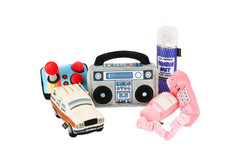With the feel of winter already in the air, it’s time to think about winterizing your home and getting ready for the approaching season. When we winterize our homes (and our lives), our daily routines and habits also change, which can spell challenges for our pets. As you start getting ready for winter, it’s important to also consider how the season will affect your dog or other indoor companion. With the steps outlined below, you can get yourself and your pets ready, ensuring that the transition into the season is easy, safe, and enjoyable for everyone.
Start Bringing Plants Inside
One of the first steps you’ll want to take in winterizing your home is to bring potted plants inside to protect them from the cold weather. Be sure to do this before the first frost. Most potted plants will do just fine living on a windowsill or on a sun porch through the winter, but you’ll need to think carefully about where you place those plants.
Your dog may be fascinated by the plants that have suddenly appeared in your home, and they could knock over and damage the plants. Additionally, some plants are toxic to pets if ingested, so before bringing any plants inside, double-check that they won’t potentially harm your pet. To keep your pets safe in your apartment or house, avoid bringing toxic plants like poinsettias, hyacinth, oleander, or daffodils inside. If you must bring these types of plants indoors, secure them away in a room, like a sun porch or mudroom, that your pets cannot access.
Prepare for and Prevent Pet Health Issues
The winter will cause some changes in your routine and the items that you keep in your home, and these changes could result in potential health issues for your pet. For instance, you’ll probably have gloves and scarves out drying in your house, and it’s common to spray for pests and even put out mouse or rat poison in the winter. You’ll probably also use salt for your sidewalks and driveway. All of these things can be hazardous to your pet’s health.
Start by making sure that your dog can’t access any of your gloves or scarves, and only purchase salt that is pet-safe. If you need to spray your home for pests, use pet-safe products and follow the directions about keeping your family out of the home and letting the area air out. Don’t risk using rat or mouse poison in or outside of your home when you have pets, since it is toxic and can kill your pets if they ingest it. Instead, consider other means of controlling rodents, like electronic devices or methods that discourage rodents from coming into your home, like peppermint oil or dryer sheets.
Even though you take steps to keep your pet safe, accidents can still happen. If you don’t yet have pet insurance, now may be time to consider signing your pet up. Pet insurance can help to make unexpected emergency vet bills more manageable. Finding out that your pet is sick or injured is a highly stressful time, but knowing that your pet is insured can help to minimize the financial stress that you’ll undergo at the same time.
Get Ready for More Time Indoors
As the temperatures drop, it will be time to close up all of your windows and spend more time indoors, and your dog will no longer be able to spend entire days outside. This is a significant change for active breeds, but there are a few ways to help your dog with this transition.
You can allow your dog to spend some time outside as long as you take steps to prevent hypothermia. Investing in a dog house heater or a heating pad can extend the amount of time that your dog can safely spend outdoors in cold temperatures. Remember, though, that these items are only useful if your dog spends time in his dog house, and they won’t allow your dog to spend the entire day outside.
You’ll need to find ways to support your dog’s well-being indoors during the winter, too. You can buy your dog more toys to offer him mental stimulation while inside, and give him a warm bed to cuddle up on inside the house. Consider teaching your dog some new tricks while indoors to keep his mind active, or do some obedience training indoors. Come spring, your dog will be able to show off his new tricks and obedience skills.
Your dog may be tempted to curl up in front of the fireplace, but invest in a fireplace guard to keep your dog and his bedding a safe distance from the fire. Similarly, make sure that your dog’s bedding is kept away from other heat sources, like furnaces.
The winter poses some challenges for both you and your pets, but with a little creativity and some planning, you can ensure that your pet stays happy and healthy during the winter.






